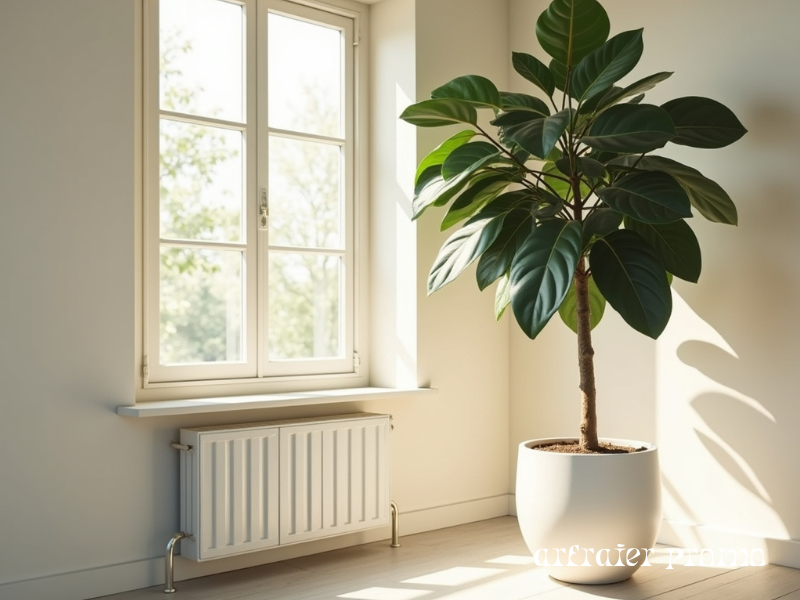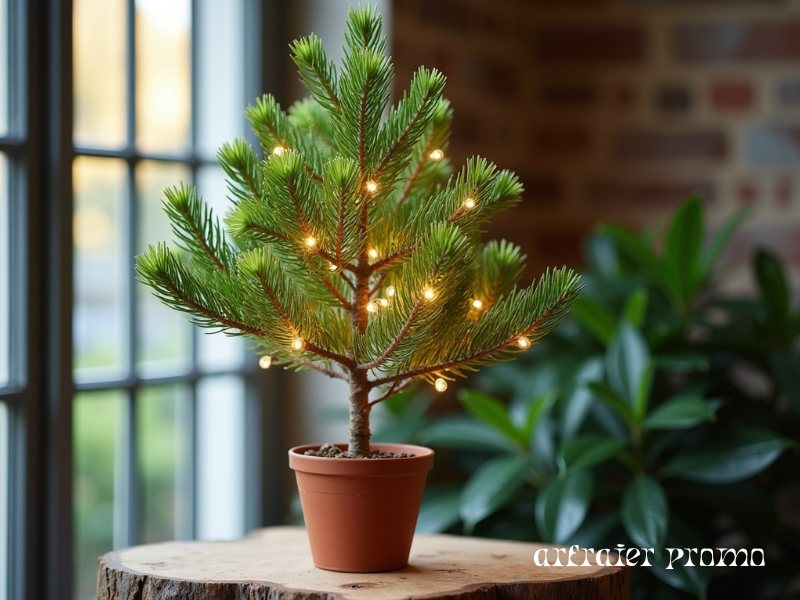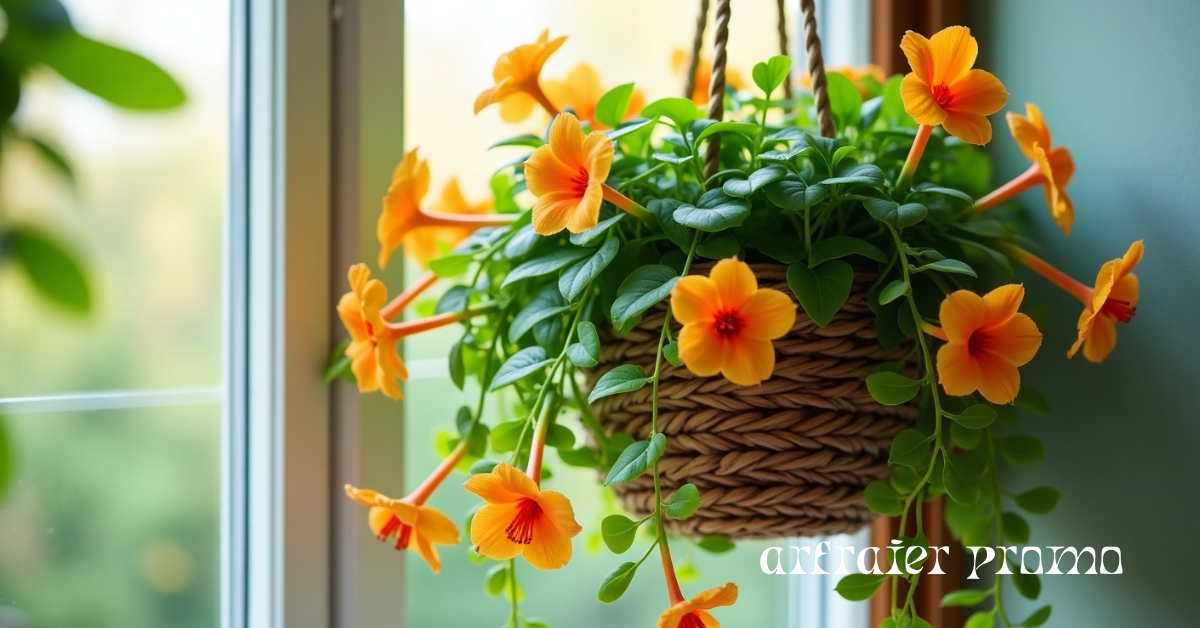Indoor greenery isn’t just a design trend — it’s a lifestyle. Plants have the power to transform dull spaces into vibrant, relaxing sanctuaries. But while seasonal plants fade with time, indoor evergreen trees stay lush and green throughout the year. Their ability to thrive indoors, even with limited sunlight, makes them the perfect choice for homeowners who want year-round freshness and color.
Whether you’re decorating a cozy apartment or brightening a spacious living room, here are 10 stunning indoor evergreen trees that bring beauty, purity, and peace into your home.
1. Fiddle Leaf Fig (Ficus lyrata)
The Fiddle Leaf Fig is often called the “designer’s tree,” and for good reason. Its broad, glossy leaves and sculptural shape instantly command attention. It’s one of the most popular choices for living rooms, offices, and modern spaces.
Why it’s loved: The large leaves create a tropical yet elegant atmosphere. This tree is also known to improve indoor air quality by filtering toxins.
Care tips: Place your Fiddle Leaf Fig in bright, indirect sunlight. Water once a week and avoid moving it around too often — this plant doesn’t like change. Rotate the pot occasionally so all sides receive light evenly.
Best spot: Next to a window in your living room or entryway where it can enjoy natural light.
Fun fact:The Fiddle Leaf Fig is one of the most photographed houseplants on social media, especially among Gen Z homeowners who love its clean, modern look.

2. Norfolk Island Pine
If you’ve ever wished you could keep your Christmas tree year-round, the Norfolk Island Pine is your answer. This evergreen stays soft, symmetrical, and green all year long.
Why it’s loved: It looks festive without effort and fits perfectly into minimalist or coastal-inspired interiors.
Care tips: Give it bright, indirect light and keep the soil evenly moist. Avoid dry air — this plant loves humidity. A light misting every few days helps keep its needles healthy.
Best spot: Place it near a window with filtered sunlight, away from direct drafts or heat vents.

3. Rubber Plant (Ficus elastica)
The Rubber Plant is a timeless indoor evergreen with large, glossy leaves that add depth and character to any room. It’s both stylish and practical, making it ideal for homeowners who want a statement tree without the fuss.
Why it’s loved: Its dark, rubbery leaves stay rich and shiny year-round. Plus, it’s a natural air purifier that absorbs toxins like formaldehyde.
Care tips: Prefers medium to bright light and should be watered every 7–10 days. Wipe leaves regularly to remove dust and encourage healthy breathing.
Best spot: Corners, entryways, or next to furniture for a bold touch of green.
4. Weeping Fig (Ficus benjamina)
The Weeping Fig is a graceful indoor tree with slender branches and delicate leaves that gently cascade downward. It brings a touch of serenity to any room.
Why it’s loved: Its natural drooping shape adds softness to modern interiors and makes spaces feel more inviting.
Care tips: Keep it in bright, filtered sunlight and water moderately. This plant doesn’t like to be moved or exposed to sudden temperature changes.
Best spot: Offices, sunrooms, or living areas with stable light conditions.

5. Jade Plant (Crassula ovata)
The Jade Plant, also called the “money tree” or “friendship tree,” is a symbol of prosperity and positive energy. With its thick, shiny leaves, it’s both decorative and meaningful.
Why it’s loved: It’s low-maintenance, drought-tolerant, and can live for decades. Many families even pass Jade Plants down through generations.
Care tips: Needs bright sunlight and occasional watering. Allow the soil to dry completely between waterings.
Best spot: Windowsills or desks with plenty of natural light.
Tip: The Jade Plant is one of the most popular low-maintenance indoor plants — perfect for people who travel often or forget to water regularly.
6. Dwarf Umbrella Tree (Schefflera arboricola)
Compact, lush, and full of charm, the Dwarf Umbrella Tree is a favorite among apartment dwellers. Its glossy leaves radiate from a central stem, creating a canopy-like effect.
Why it’s loved: It adapts easily to different environments and adds tropical vibes to small spaces.
Care tips: Water moderately and ensure good drainage. The Umbrella Tree prefers indirect sunlight and thrives in normal room humidity.
Best spot: Bedrooms, offices, or kitchens with filtered light.

7. Areca Palm
If you dream of turning your home into a mini tropical paradise, the Areca Palm is your go-to tree. With its feathery fronds and golden-green stems, it adds life and texture to any room.
Why it’s loved: It’s a natural humidifier and air purifier that helps remove harmful chemicals from the air.
Care tips: Keep the soil slightly moist and place it in bright, indirect sunlight. Avoid letting it dry out completely.
Best spot: Living rooms, hallways, or open spaces where its tall fronds can spread freely.
Air fact: According to NASA studies, the Areca Palm is one of the best air-purifying indoor plants, helping reduce carbon dioxide and toxins.
8. Dragon Tree (Dracaena marginata)
Sleek and modern, the Dragon Tree is perfect for minimalists. Its long, narrow leaves with red edges add a splash of color without overwhelming your decor.
Why it’s loved: It tolerates neglect, low light, and infrequent watering — making it one of the easiest indoor evergreens to care for.
Care tips: Water only when the top two inches of soil are dry. Avoid direct sunlight, which can burn the leaves.
Best spot: Offices, bedrooms, or corners that need a low-maintenance accent plant.
9. Chinese Evergreen (Aglaonema)
The Chinese Evergreen is one of the most forgiving houseplants. Known for its patterned leaves, it thrives even in dimly lit areas.
Why it’s loved: It adds instant greenery to places where most plants can’t survive.
Care tips: Prefers low to medium light and moderate watering. Avoid overwatering and cold drafts.
Best spot: Bathrooms, hallways, or shaded corners.
Health fact: The Chinese Evergreen is known to remove up to 78% of airborne mold spores, making it an excellent choice for improving indoor air quality.

10. Parlor Palm (Chamaedorea elegans)
A Victorian favorite, the Parlor Palm has been adorning homes since the 1800s. It’s known for its classic look and ability to thrive in low-light conditions.
Why it’s loved: It creates a soft, calming atmosphere while purifying indoor air.
Care tips: Water only when the top inch of soil feels dry. It can tolerate lower light than most palms.
Best spot: Bedrooms, home offices, or cozy reading corners.
Why Gen Z Is Obsessed with Plants
Indoor greenery has become a lifestyle trend, especially among younger generations. Gen Z’s love for plants goes beyond aesthetics — it’s deeply connected to wellness, sustainability, and emotional balance.
Here’s why indoor evergreens are so popular:
-
Mental wellness: Caring for plants reduces stress and improves focus.
-
Sustainability: Growing indoor plants promotes eco-conscious living.
-
Digital detox: Nurturing plants helps people unplug and reconnect with nature.
-
Home aesthetics: Greenery enhances minimalist and cozy interior styles.
From Fiddle Leaf Figs to Jade Plants, indoor trees have become a symbol of mindfulness and balance in modern living.
Best Indoor Evergreen Trees at a Glance
Tree Name |
Light Requirement |
Watering Frequency |
Ideal Spot |
Maintenance Level |
|---|---|---|---|---|
| Fiddle Leaf Fig | Bright, indirect | Weekly | Living room | Medium |
| Norfolk Island Pine | Bright | Keep moist | Near window | Medium |
| Rubber Plant | Medium to bright | Every 7–10 days | Corners | Low |
| Weeping Fig | Filtered light | Weekly | Office | Medium |
| Jade Plant | Bright | Occasional | Windowsill | Very Low |
| Umbrella Tree | Indirect | Moderate | Bedroom | Low |
| Areca Palm | Bright, indirect | Slightly moist | Corners | Medium |
| Dragon Tree | Low to medium | Every 2 weeks | Modern spaces | Very Low |
| Chinese Evergreen | Low | Moderate | Hallway | Very Low |
| Parlor Palm | Low to medium | When top soil dries | Bedroom | Low |
Conclusion
Indoor evergreen trees are more than just home decor — they’re companions that bring health, calm, and nature into your everyday life. From the elegant Fiddle Leaf Fig to the hardy Dragon Tree, these evergreens offer a range of choices for every style and skill level.
Whether you’re a seasoned plant lover or just starting your indoor garden, adding even one of these beautiful trees can make your home feel fresher, brighter, and more alive — all year long.
Frequently Asked Questions (FAQs)
Q1. Which tree is best for home inside?
The Areca Palm and Fiddle Leaf Fig are two of the best indoor trees for homes. They thrive indoors, look elegant, and purify the air naturally.
Q2. What is the most low-maintenance indoor tree?
The Dragon Tree and Jade Plant are top low-maintenance choices. They require minimal watering, tolerate low light, and grow steadily without fuss.
Q3. Why is Gen Z obsessed with plants?
Plants offer comfort, calm, and a sense of purpose. Gen Z values sustainability and mental well-being — plants align perfectly with both.
Q4. What plant removes 78% of airborne mold?
The Chinese Evergreen is known to remove up to 78% of airborne mold spores, improving indoor air quality significantly.
Q5. Which indoor evergreen tree is easiest to maintain?
The Chinese Evergreen and Dragon Tree are the easiest. They adapt to various light conditions and only need watering every 1–2 weeks.
Q6. Can evergreen trees really survive indoors all year?
Yes, many evergreen species like the Parlor Palm and Rubber Plant are perfectly suited to indoor life when given the right light and moisture.
Q7. Are indoor evergreen trees safe for pets?
Some trees, such as the Parlor Palm, are pet-safe. Others, like the Fiddle Leaf Fig or Rubber Plant, can be mildly toxic if ingested — always check before buying.





